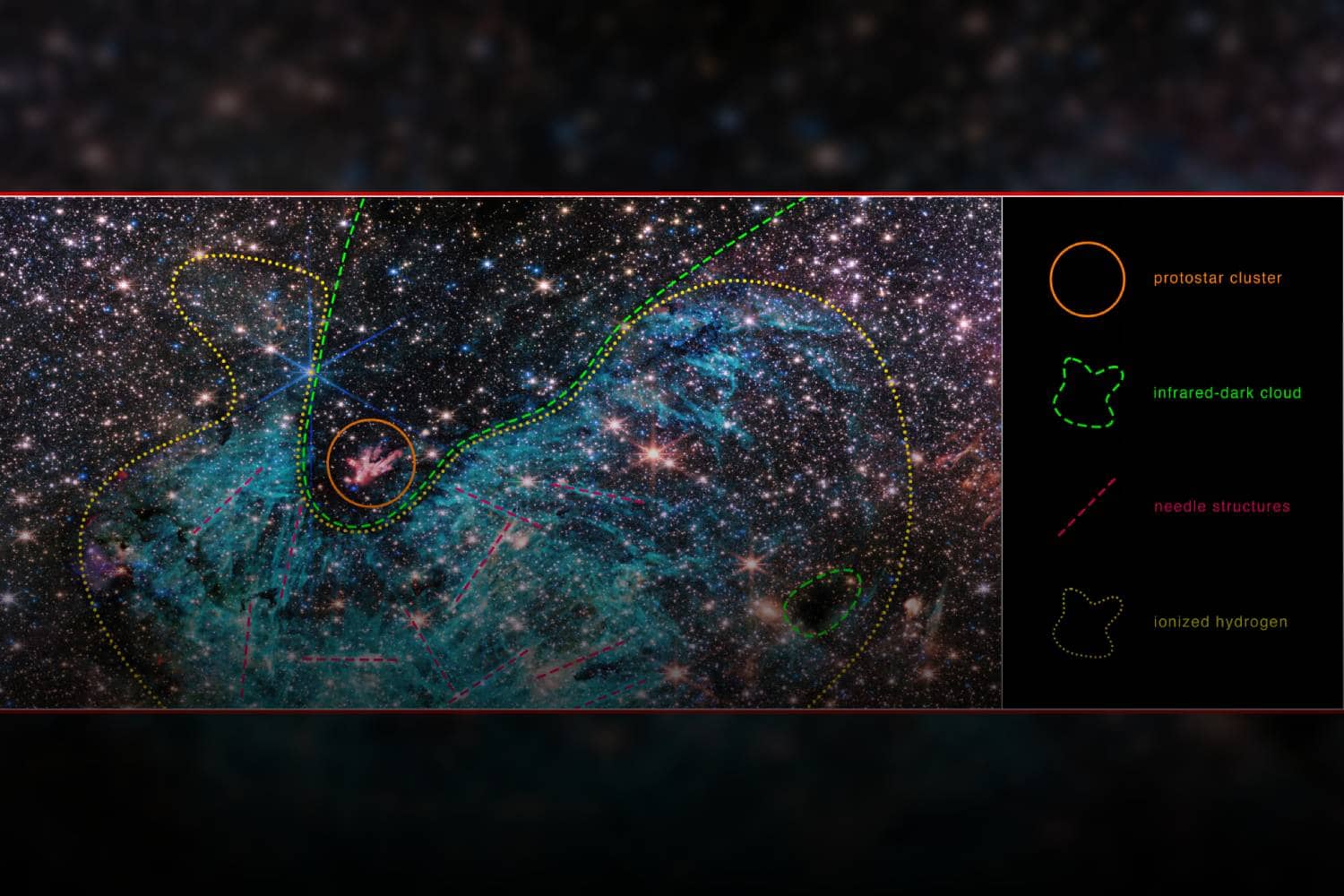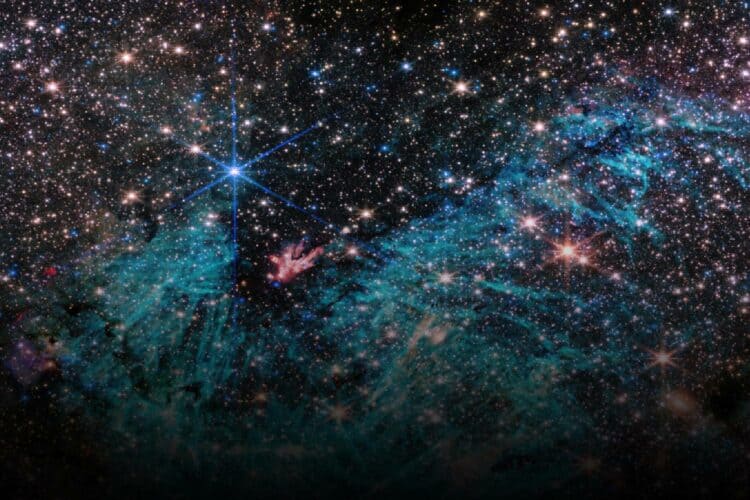The James Webb Space Telescope has captured a detailed image of the Milky Way’s dense centre, revealing new, unexplained features in the Sagittarius C region.
James Webb Space Telescope reveals unseen features of Milky Way
The latest image from the James Webb Space Telescope offers an unprecedented look at the Sagittarius C (Sgr C) region, located approximately 300 light-years from the Milky Way’s central supermassive black hole, Sagittarius A.
According to NASA, this area, rich in star-forming activity, is now seen with clarity never achieved before in infrared imaging.
Samuel Crowe, the principal investigator of the observation team and an undergraduate at the University of Virginia, emphasised the novelty of the data obtained from Webb.
“Webb reveals an incredible amount of detail, allowing us to study star formation in this sort of environment in a way that wasn’t possible previously.” he said.
The galactic centre, as noted by Professor Jonathan Tan, Crowe’s advisor, is an environment where existing theories of star formation face their most rigorous test. The complexity and extremity of this region offer a fertile ground for astronomical research.
Among the estimated half-million stars captured in the image, a cluster of protostars stands out.
These nascent stars, still accumulating mass, are nestled in an infrared-dark cloud, making the region appear less crowded than it actually is.
This dense cloud obscures the light from the stars behind it, highlighting the ongoing star formation process.
Surprising features and future research

Webb’s Near-Infrared Camera (NIRCam) has detected large-scale emissions from ionised hydrogen, a surprising extent of which warrants further investigation.
Crowe plans to delve deeper into the needle-like structures within this hydrogen, which appear chaotically oriented.
Rubén Fedriani, a co-investigator from the Instituto Astrofísica de Andalucía in Spain, described the galactic centre as a tumultuous area filled with turbulent, magnetised gas clouds. The data from Webb is expected to shed light on these complex dynamics.
“Webb has provided us with a ton of data on this extreme environment, and we are just starting to dig into it,” he said.
The proximity of the galactic centre, about 25 000 light-years from Earth, allows the Webb telescope to study individual stars, offering insights into the star formation process in different cosmic environments.
One key question is whether the Milky Way’s centre fosters the formation of more massive stars compared to its outer spiral arms.
Crowe highlighted the importance of understanding massive stars, which are crucial in the production of heavy elements.
The James Webb Space Telescope, a joint project of NASA, ESA, and the Canadian Space Agency, continues to unravel the mysteries of our solar system and beyond, offering new perspectives on the universe and our place within it.






